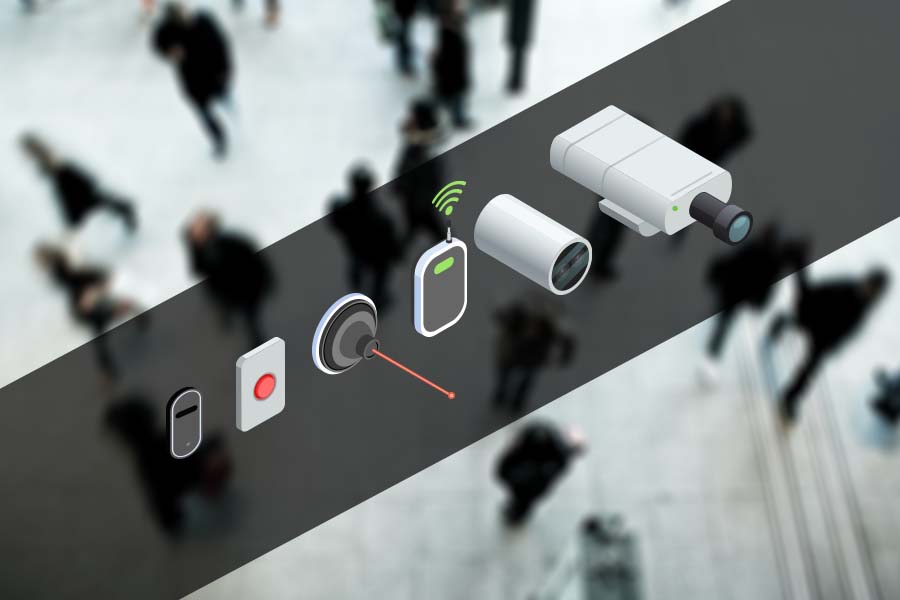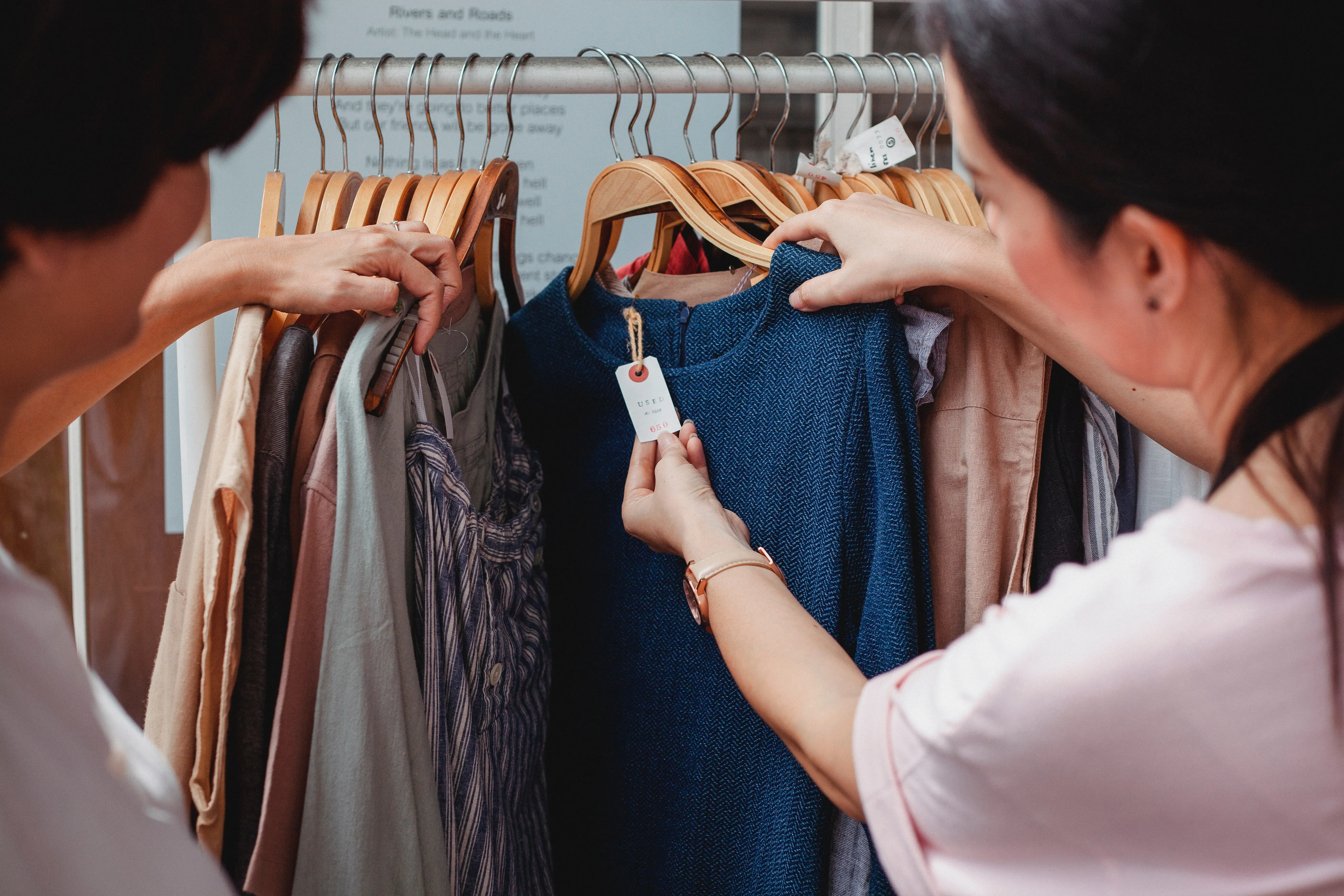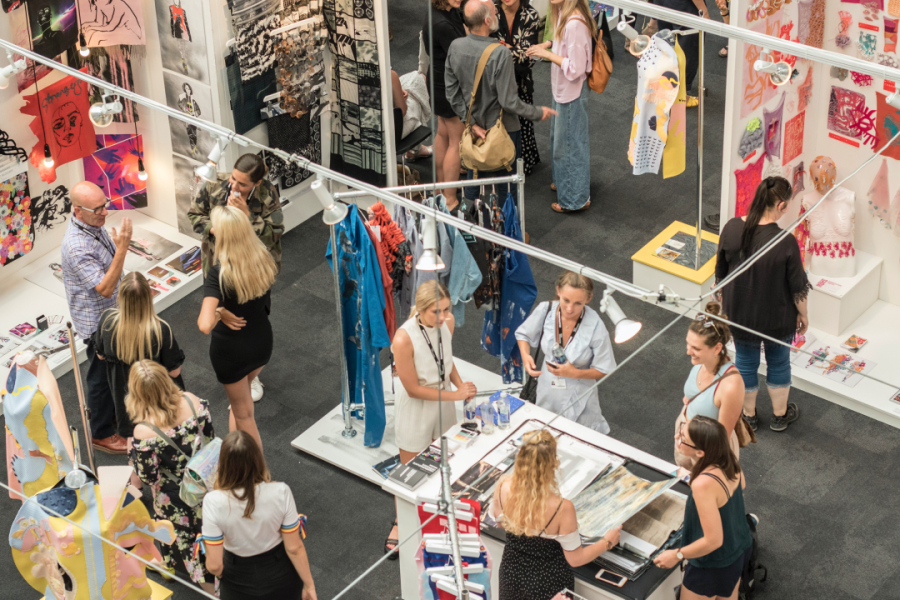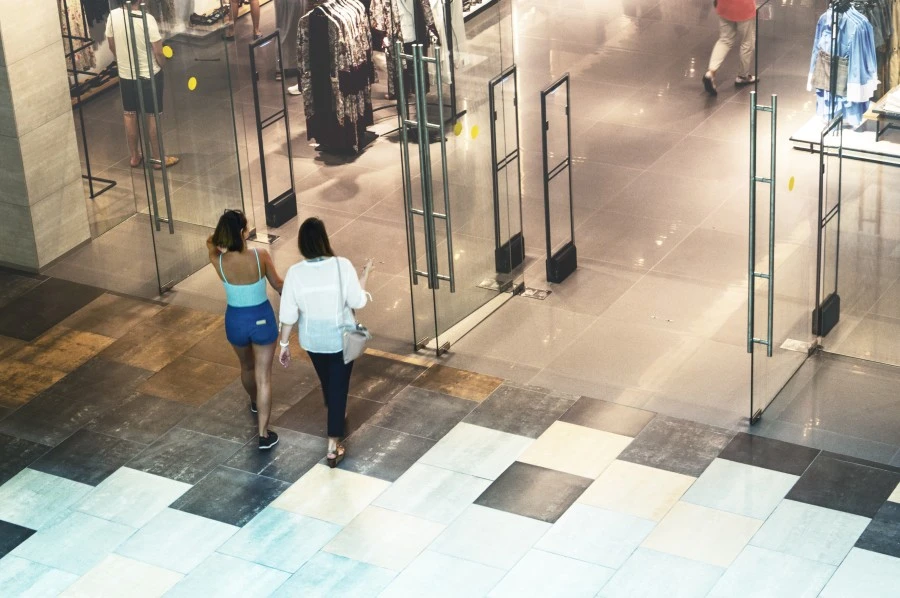Insights People Counting 10 Jun 2022
Accuracy is crucial when you
choose the right people counter
What is a people counter, how does it work, what can it help with, what alternatives are available on the market and what do I as a store owner need to consider in the choice between these? Here you get answers to all these important questions.
Ever since the establishment of the retail around the world, the need to follow and measure customers' movements, behaviors and needs has existed. Without knowing anything about the visitors, it is difficult to create the attractive and sustainable solutions that customers demand. Therefore, there has always been a great need to capture data and perform analyzes based on correct observations. The new technologies of recent decades have facilitated this data collection.
Previously, manual people counters were used, which mostly consisted of an employee standing near the entrance to the store and clicking on a counting unit each time a person passed the entrance. This method was considered less reliable due to the human factor and an inefficient use of human resources.
People counters are defined as units that count and monitor the flow and behavior of people who visit public spaces, such as shops and malls. They collect data by counting the number of people entering and then leaving the premises. They can also measure their gender, sizes and movement patterns.
The surfaces are continuously monitored thanks to an independent user interface with remote access. The data collected can then be used for analysis in order to provide stores and malls with better decision support in terms of marketing, design and layout, as well as purchasing, warehousing and logistics of goods.
Examples of different techniques for visitor counters are manual clickers, smart floor counters, wifi calculators, pressure-sensitive calculators, thermal and active infrared measurement, radar and ultrasound waves, lasers and camera and image detection.
This is how a visitor counter works
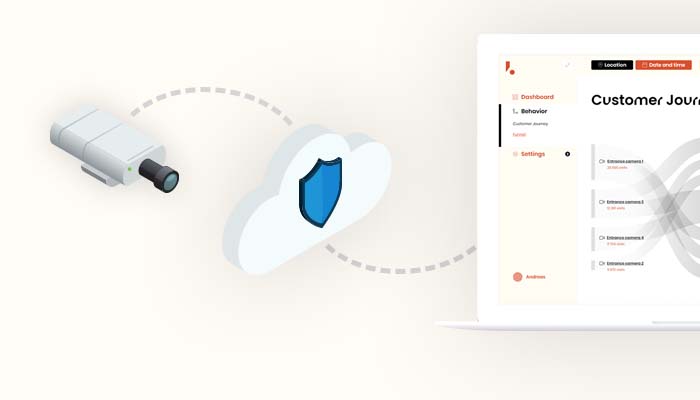
People counters mainly count people who visit or leave a room or an area. This is usually done on an invisible line at an input or output. Depending on the size of the passage and the room, one or more sensors are used.
The way in which the passing person is raised depends on the technology used. Each individual technology has its own strengths and weaknesses.
The data that is collected is normally stored and forwarded in near real time via the internet to a platform, where it is then processed for different types of analyzes.
With the help of visitor counters, the stores can follow the flow of traffic. They can see which entrances have the most visitors and at what times. Based on this, they can adapt the level of service to the number of visitors. It is also possible to divide shops and shopping centers into different zones in order to get a better overview and by following the flow of visitors with the help of a zone map.
Being able to see which zones are most visited together with the possibility of distinguishing children from adults is crucial for the development of a store or a shopping center.
Increase efficiency with a reliable people counter
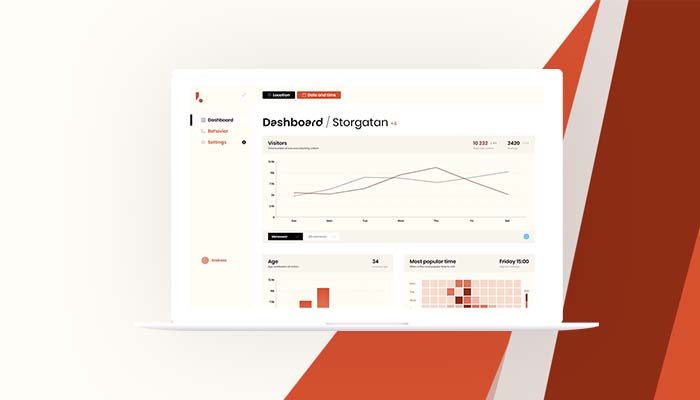
Effective business decisions require good intelligence and a good foundation. To understand the flow of visitors to a store or a mall, qualitative systems for people counting are needed, combined with reliable and comparable statistics. That's exactly what people counters provide. In fact, people counters along with cash receipts are the most important and common insight for stores and malls.
With accurate and reliable people counters, you can do several different things:
- Measure the flow of visitors. Get a better understanding of the flow of visitors during the day and see how many visitors are converted into customers.
- Measure conversion rate. Calculate your store's conversion rate, which is the percentage of the total number of visitors versus the number who make purchases.
- Increase the conversion rate. Contribute to increase traffic, conversion rate and transaction volume. Converting visitors into customers is central to profitability - regardless of industry.
- Distinguish gender, age and customer groups. Distinguish different visitors, not least distinguish children from adults.
- Benchmark between different stores. Compare store performance, ie understand stores' earnings changes over time and benchmark how stores and malls perform over time and against each other. You can discover the stores that achieve the best results, analyze them in detail and understand why.
- See the customer journeys. Calculate your customers' movement patterns.
- Improve layout and design. Optimize the layout and design of your stores.
- Improve customer service.
- Streamline queue management. People counters also help stores and malls implement more efficient queue management strategies. The number of people waiting in line is noted using the sensors. In this way, the management and safety of the site understand the need to become more efficient and faster by hiring more staff.
- Facilitate recruitment, staffing and personnel planning. Staffing needs are often directly related to the density of visitor traffic, and services such as cleaning and maintenance are usually performed when traffic is at its lowest.
- Evaluate marketing campaigns. Evaluate which activities and marketing campaigns and time periods have the best impact. By analyzing how different actions, campaigns and pilot projects affect the number of visitors and then correlating the analysis result with the number of completed sales, you make visible new ways to increase the conversion rate. The stores also gain insights by observing consumers' movements and decisions based on the advertising activities that are carried out.
- Optimize the attractiveness of the surfaces. For property owners, access to a reliable visitor bill also means better opportunities to optimize the conditions for fairer rental negotiations, as well as a better opportunity to attract new tenants.
Learn more about accuracy of people counters
What a people counter includes
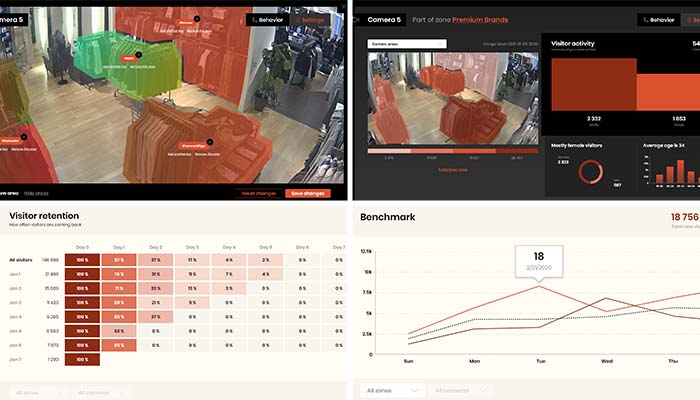
With the help of people counters, the shops and malls get a better knowledge of the flow of visitors during the day and they can also follow how long they stay and how many visitors are converted into customers.
Other important features are:
- Heat map. This measured value tracks the user's involvement in different parts of the stores. The measurement usually takes place in percent at a certain time period. The level of commitment is shown through the use of colors, where warmer colors report more commitment.
- Zone count / traffic flow. With the help of this function, which is similar to the heat map, it is possible to see the traffic flow in a store or a mall and there also analyze the engagement's levels and sizes. The diagrams make it easier to see which surfaces are the most attractive.
- Recurring customers. The number of people who enter a store and who have visited the store before is measured here. This can be done by recognizing pictures or the mobiles' unique wifi signals.
- Benchmarking. This service makes it possible to compare stores and see which of these achieve the best results and why they do so. It can also indicate which marketing measures provide the highest returns and other different trends.
A jungle of different techniques where few are adapted for retail
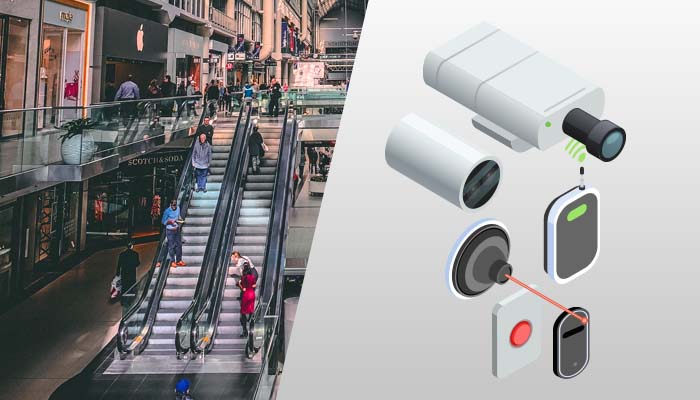
There are a variety of techniques used to count people and retail visitors. The most common are manual clickers, smart floor counters, wifi, pressure-sensitive counters, thermal and active infrared measurement, radar and ultrasound waves, lasers and camera and image detection, stereoscopic image reproduction and anonymized image recognition using AI and existing in-store security cameras.
'Here they are described in more detail:
- Pressure-sensitive counters
In addition to manual clickers, pressure-sensitive sensors are one of the earliest techniques for visitor counting. With the help of this technology, visitors are counted based on the number of steps on a pressure-sensitive platform. Sometimes pressure-sensitive carpets are also used.
- Thermal infrared heat. This technology uses thermal heat to detect people moving through a passage. The technology, which can also be offered in the form of a wireless alternative for faster and easier installations, is safe from a privacy perspective, as it only treats people's body heat. The systems are usually implemented using embedded technology and mounted above the passages. It is difficult to verify the accuracy of thermal counters because the image measurement relay on the units are heat sources. They can be incorrect because thermal calculators have difficulty measuring the residence time of targets longer than a few seconds.
- Active infrared counter (IR beam). This technology actively emits infrared rays to count humans. A count is generated when an object passes through the transmitter / receiver area and refracts the beam. Although this works well for simpler visitor bills, it is less reliable in rooms with high frequency. The object that refracts the beam also does not necessarily have to be a person. Despite the limitations of the technology, infrared counters are still widely used due to their low cost and ease of installation.
- Wifi. The movements of mobile phones are measured here. The advantage of this technology is that the mobiles are always visible, as long as they are switched on. The disadvantage is that the geographical accuracy today is not yet sufficient to measure the small distances required in shops or malls. In addition, there are still no collaborations between different operators, which means major restrictions because not all customers today can be followed at the same time. It is also unclear whether the use is approved from a GDPR point of view.
- Radar and ultrasound waves. Here, visitors are measured by emitting invisible electromagnetic waves or sound waves which then bounce against the people passing the given space. Nor are the calculations of this technology judged to be sufficiently accurate and reliable for commercial application in shops and malls.
- Laser counter. The laser technology is insensitive to ambient light and ensures an accurate and reliable analysis of human flows in different types of environments. In addition, it offers accurate and real-time measurements of human flow. However, laser counters only count people and provide no further information about the people who visit the stores,
- Image-based people counters. Camera and image detection is probably the most widely used technology for people counting. Through face recognition via cameras, passing people are detected, while the technology generates much additional information in the form of age, gender and ethnicity and more. However, most facial recognition techniques are not able to comply with the GDPR legislation that has been introduced today in the EU and in many other places around the world. 3D cameras also require the installation of special 3D cameras at store entrances.
The company Indivd has developed its own patented solution, which uses anonymized image detection and which is approved by the Swedish Integrity Authority. Accuracy and reliability are high, while the technology is designed based on the stores' existing security cameras. No new camera installations required. The technology is approved for use in stores by the Swedish Integrity Authority.
To think about before you invest - this distinguishes the technicians
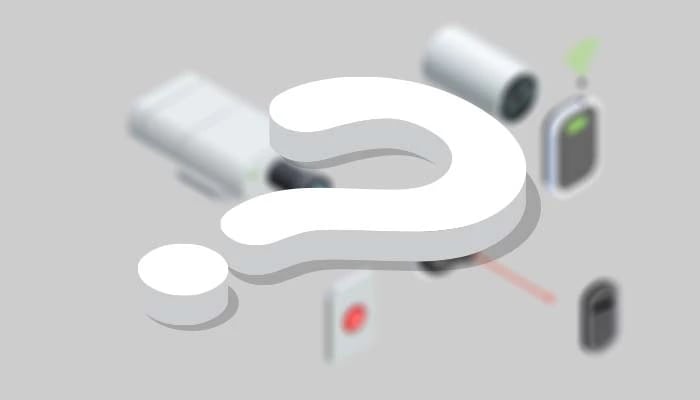
Visitor counters vary in several important respects. Most important is to study and be careful with the differences when it comes to accuracy and reliability.
- The degree of accuracy, accuracy and reliability. This is usually assessed as a percentage. Most vendors claim that their solutions reach an accuracy of 90-100%. The problem is that their customers do not agree and that there is currently no standardized way to compare suppliers' calculations of their reliability. From a market point of view, this is a jungle, where suppliers often trump each other, to the detriment of shop and mall buyers.
The accuracy rate is not really about the accuracy of the store or the mall. In the tests that the companies refer to, the visitor counters are tested and validated under optimal and not realistic conditions. Tests in the real environment are most often affected by other variables, such as the fact that many visitors pass in and out through the entrance without actually visiting the premises. The lighting conditions and the amount of simultaneous visitors can also vary greatly between test environments and existing store premises, which distorts the statistics. Finally, all visitors are in the real guard.
In other words, the only reliably measurable figure concerning accuracy is that which is carried out under realistic conditions in existing retail premises or malls.
- The amount of measured values and insights. This large store environment does not differentiate between customers, but part of those who pass the entrances consist of staff or between what other different insights the different suppliers can offer.
- Exclusion function. This is another measure that is important to take into account in more detail in the comparison between different people counters. Many solutions also include shopping carts and staff, which completely distorts the results. Staff movements are usually uneven based on time period and times of day.
- Height measurement. Many people counters also do not make a difference between adults and children, others are set at a certain height and then exclude even small people.
- Additional costs. When deciding on the choice of visitor counter, it is also important to gain knowledge about what additional costs will be added. How demanding is the installation and do you need extra hardware in the form of cameras, devices and sensors? Prices differ greatly and it is important not only to stare blindly at the cost per sensor, but to look at the overall picture.
- Integrity-infringing solutions. In addition, many visitor accounting solutions are also not approved or guaranteed to be used from a GDPR perspective.

